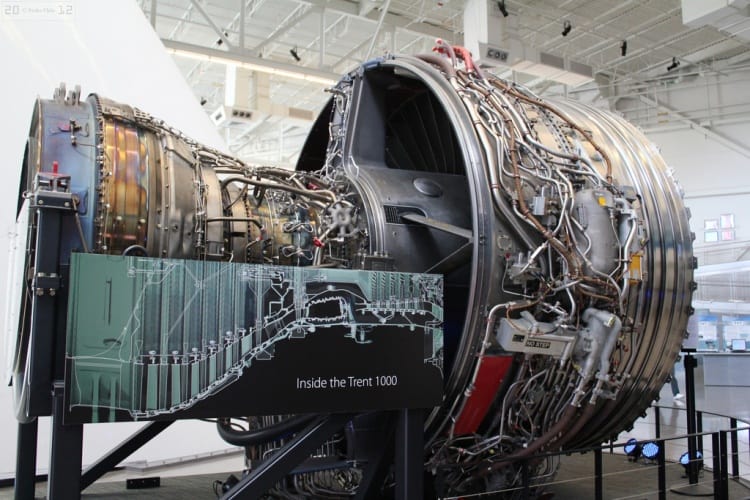
Talking to journalists at a recent media presentation event, Rolls-Royce civil aerospace chief customer officer Dominic Horwood shed light on the causes of turbine blade cracking in the Trent 1000 gas turbine engine, which powers the Boeing 787 Dreamliner.
Cracking problems in the intermediate pressure (IPT) section of the turbine have plagued the engine since early 2016, five years after its launch. Unscheduled groundings of Trent 1000-powered aircraft cost Rolls-Royce some £450m last year, and Horwood said that addressing the problem was "the single most important issue" currently facing the company.
One of Rolls-Royce's most important potential customers for Trent 1000, Air New Zealand, recently announced that it has opted for General Electric power-plants for a new batch of 787-10 airliners, although its 787-9 fleets still fly with Trent engines.
According to Horwood, the problem was caused by sulphurisation; a chemical process affecting the nickel alloy which comprises the IPT blades. "We are very confident that this problem will not occur in any of our other engines," Horwood said. "This is confined to component level in the Trent 1000."
The geometry around the root of the IPT blade concentrated air sucked in by the engine's compressor system, which in some parts of the world (notably Asia) contained higher levels of sulphur-containing pollutants than the engine had been tested with. The temperatures within the IPT and some of the specialised coatings on the blade may have exacerbated the problem, Horwood said, producing air turbulence and local temperature increases that led to fatigue-like behaviour in the metal which resulted in cracking.
Because of the way engines are tested - inside enclosed buildings called test beds where the engines are suspended from ceiling gantries and run on the ambient air from the surroundings - this problem could not be foreseen, Horwood explained. "The issue is how to find such issues on the test bench, how to convince the engine it has been flying for years in, say, Asia," he said.
Such contextual issues are increasingly incorporated intro Rolls-Royce's development and design programmes, as well as its maintenance operations which - as most engines are leased under a package that includes aftercare - is an important part of the business.
"This is about learning," Horwood said, "and we are already applying that learning in our Ultrafan future technology programme."
Ultrafan, the next generation of Rolls-Royce large airliner engines to follow the Trent series, is seeing the building of Rolls-Royce's largest ever test-bed on Derby civil aerospace campus.











Construction industry lags in tech adoption
Are these the best people to ask "Insights from 2,000 Industry Leaders"? - what would their customers views be like (perhaps more...